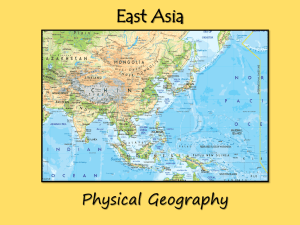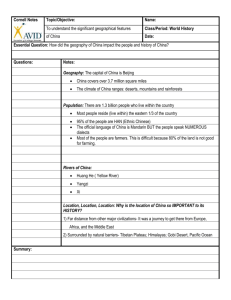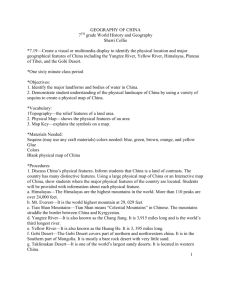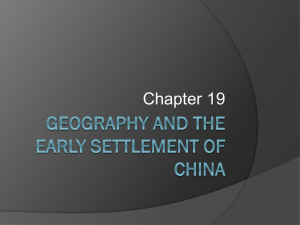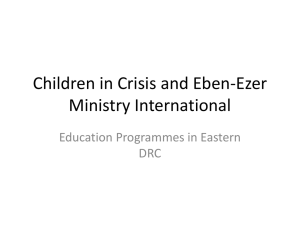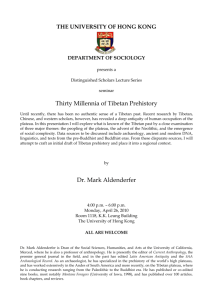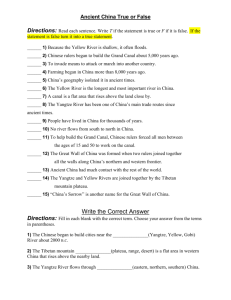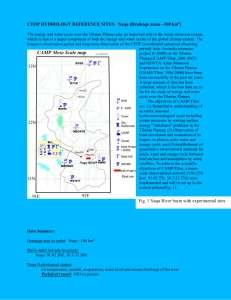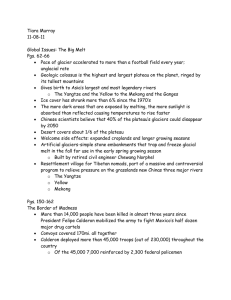Geography of East Asia
advertisement
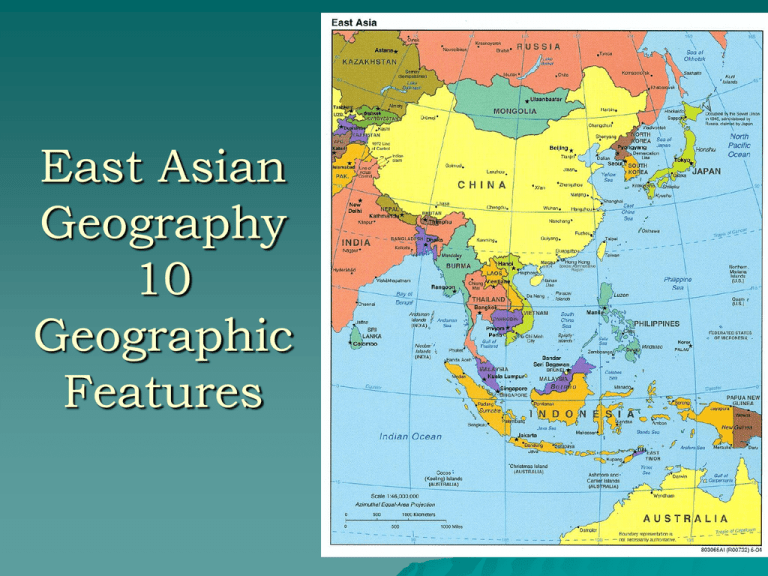
East Asian Geography 10 Geographic Features #1. East Asia features many islands & archipelagos Japan is an archipelago Chain of islands Over 3000 tiny islands The Ring of Fire is a narrow band of volcanoes that nearly encircles the Pacific Ocean. 75% of world’s active volcanoes are here. #2 Mt. Fuji Jan. 1995 earthquake Tsunami of 2011 #3 China is home to 3 of the world’s largest cold deserts. – Gobi (largest desert in Asia) – Taklimakan (the sea of death) – Chang Tang (plateau of Tibet) #4 Three Asia major rivers are a lifeline to – Yangtze (longest) – Huang He (Yellow) – Mekong Greatly in Asia influence the way people live Chinese civilization began on the Yellow River Loess – fertile topsoil spread by wind; largely agricultural society #5. China’s civilization developed over a long period in considerable isolation, protected by physiographic barriers and by sheer distance from other cultures. The Himalayas in the South The Takla Makan& Gobi deserts to West & North #6: Mountains & Plateaus are major feature of topography Himalayas & Tibetan Plateau 4/5th of Japan is mountainous terrain, thus not a lot of arable land. Korea also features many mountainous areas. Tibetan Plateau All told, some two billion people in more than a dozen countries— nearly a third of the world's population—depend on rivers fed by the snow and ice of the plateau region. . 7. China’s enormous population is strongly concentrated in the country’s eastern regions. Western areas remain comparatively empty and unproductive. In Japan Most of the population lives in coastal plains and/or river valleys. Kanto Plain very crowded 20,000 ppl. Per sq. mile Subway pushers in Tokyo #8: “The Land of Rice & Fish” Rice is a staple 90% of this crop is grown in East Asia & consumed there. The majority of people in E. Asia eat rice 2 or 3 times a day. North of the Yangtze River, the climate is more suited for wheat growing The close access to water=diet of fish. #9: Natural Resources vary greatly according to region China: very rich in natural resources – Oil, coal, iron, etc. Japan is limited in natural resources & is dependent on other nations #10: Much of Southeast Asia is covered by rainforest What kind of effects would this have? China remains a dominantly rural society with limited urbanization and industrialization outside of its city centers. It is one of the world’s oldest continuous civilizations
